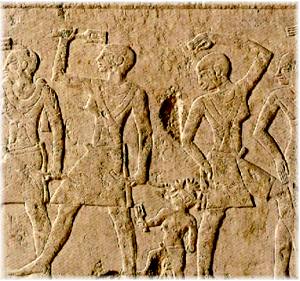A more somber than usual blog tonight, in memory of the
three human beings who lost their lives in the shootings in Kansas City on the
eve of Pesach. It would be disrespectful to their memory to call it mere irony
that none of them were Jews, when the gunman was a vitriolic anti-Semite whose
choice of venues was clearly motivated by his hatred of Jews, but it does
remind me of the famous lament of the German Protestant minister Martin
Niemöller, “First they came for…” Every time one of these crimes occurs, in
which the cocktail of readily-available arms, tolerance of sociopathy cloaked
as political opinion, and a twist perverted vigilantism, explodes into yet
another utterly shocking and yet predictable bloodbath, I think of how he
concludes his condemnation of his own and other’s indifference to Nazi
genocide: “and then, they came for me.”
What, if anything, this has to do with ballet, I do not
rightly know, though on Saturday I am going to see Ballet West perform Jiří
Kylián’s Forgotten Land, along with a
couple of other things (like, for instance, Rite
of Spring). Last fall I saw his earlier Return
to a Strange Land, a tribute to his own mentor, suddenly dead, set to
Janacek’s haunting cycle of piano pieces composed as a lament for his daughter,
and Forgotten Land (according tonotes on the Joffrey Ballet website) “explores memories, events, and people
that over time are lost or forgotten.” The echo of the title of the earlier
work cannot be a coincidence. Also, it is set to Benjamin Britten’s Sinfonia da Requiem, which, while not as
heartbreaking as the Janacek, is nevertheless not a cheery piece of music,
taking as the implicit text of its three movements the Lacrymosa, the Dies Irae, and
the Requiem aeternam of Office of the
Dead.
Dance and mourning are old partners; you can see them going
down the road together at any New Orleans-style funeral, or along the walls of
some old churches in Scandinavia, or following along behind the mummy in
Egyptian tomb paintings. The dancers may be sending the departed off in style,
celebrating the life lived, or using their living bodies in motion as a
talisman against the stillness of the grave.
There is no talisman, no Tau painted in the blood of a lamb,
that can spare any of us from the fate of all living beings – that is, to die –
but one can certainly imagine things we might do to lessen the risk that a
fourteen-year-old boy aspiring to compete in a teen talent contest and his
grandfather, a physician and a family man, would be shot by a former KKK
official armed with legally-obtained guns and an excess of perverted
self-righteousness (the guy was still shouting “Heil Hitler” when they arrested
him). One can certainly imagine laws and safeguards that would have helped
prevent the senseless death of Terri LeManno, who was visiting her elderly
mother at a Jewish-run retirement home (LeManno was Catholic). It may be true
in a limited and highly disingenuous way when NRA boosters say, that “guns don’t
kill people, people kill people,” but last week when a deranged teenager went
on a rampage at Franklin Regional High School with a pair of knives, nobody
died. A physician who treated some of the patients observed that if the boy had
been shooting instead of stabbing, the situation would have been far worse. So
people with guns do kill people much more effectively than people with sharp objects. It is one of the things guns are for and one of the reasons people no longer go to war armed "only" with spears.
So what to do, not to fall victim to quietism or despair? This
week, looking for some more socially and politically relevant way to celebrate
Passover with my kids, I came across an opinion piece by Rabbi Arthur Waskow, a
Jewish activist and Occupy Wall Streeter from New York City, that ran in the Huffington
Post in 2012. He proposes ways that people of different faith traditions can
enrich their celebration of the season’s holy days (Pesach and Palm Sunday), by
linking the ancient rituals to present day issues. It is pretty standard stuff
in terms of connecting the sufferings of the poor and oppressed today to the
fundamental messages of social justice that both Judaism and Christianity can
be understood to contain, but I really like way he concludes. He says that the
world is undergoing an “earthquake” at all levels, from the disruption of basic
biological systems to the technological redefinition of the self and
sociability, and that we have three choices; ignore the quake and get crushed
in the rubble, cling to the past as something immovable and become hopelessly
reactionary, or learn to dance in the earthquake. He urges us to “attempt to
dance in the midst of our earthquake.”
It is a metaphor, I know. But it is a metaphor with a
groove, and maybe we can dance our way out of this sad mess to it.


No comments:
Post a Comment